OmniCHannel Vs MultiChannel ( Create the Perfect Omnichannel Marketing Strategy)
How to Create the Perfect Omnichannel Marketing Strategy
What is omnichannel marketing?
Who’s using an omnichannel strategy and how?
- Lack of analytical and technical resources to make sense of data
- Difficulty integrating data
- Lack of communication between marketing agencies and/or vendors
- Lack of C-suite buy-in to the value of omni-channel
- Siloed organizational structure
Omnichannel marketing: An example

Getting started with omnichannel
1. An emphasis on context
2. Deep knowledge of the customer
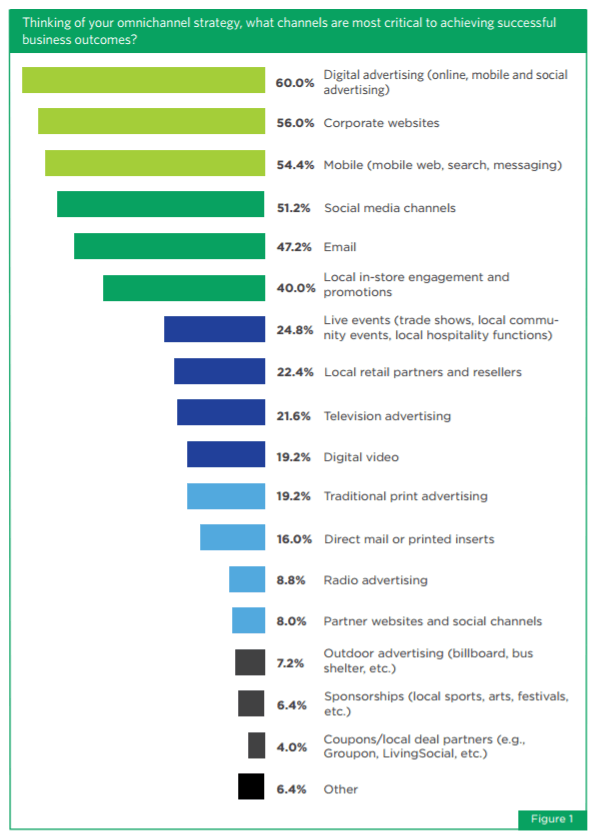
3. Inter-departmental coordination and agility
4. A fully integrated marketing technology stack
- Customer relationship management software
- Video/web conferencing solution
- Email service provider
- Marketing automation platform
- Print materials and solutions
- Analytics and data visualizations solutions
- Content management system
5. Responsively designed web pages
Is omnichannel marketing really worth the hassle?
- an average of 4% more on each shopping occasion in-store.
- 10% more online those who use only one channel.
- 13% more when doing prior research before buying.
The more channels they use, the more valuable they become.
7 Common Email Marketing Mistakes That Ecommerce Brands Make
Higher conversion rates plus the ever-increasing challenge of being noticed in a busy inbox means you can’t afford to make email marketing mistakes. These mistakes can lead to unsubscribes, poor deliverability, and an overall loss of trust with your customers.
How can you avoid these email fails? Step one—know thy enemy.
1. Writing Unclickable Subject Lines
We get it, writing an engaging email subject line is not an easy task. In efforts to stand out, ecommerce brands might resort to a few of these subject line sins that get left dusty and unopened in a subscriber’s inbox.
THE ALL CAPS SUBJECT LINE:
Don’t yell at your subscribers—it’s rude. While it might work in some certain cases, you should avoid looking spammy when possible.
Exclamation point abuse:
We’ve all seen this terrible email fail, often combined with the all-caps text that reads: “END OF THE YEAR SALE!!!!!!!!” Freeze and step away from that poor exclamation point. Using punctuation sparingly, yet effectively, will save you from this common email mistake.
Sending a subject line with a typo:
An honest mistake is still a mistake. Worse than a typo, a placeholder subject line sent to your customers can cause a good deal of embarrassment that can be saved with a simple double-check.

Clickbait Subject Lines:
I know what you’re going to say. “But Whitney, all subject lines are clickbait! That’s the point!”
Yes and no—there’s a big difference between an enticing subject line that makes your customer want to click, and using a subject line that confuses or tricks the customer into opening your email.
For example, Zooplus sent out a product recommendation email with the subject line “Your Zooplus Order” to make the customer think it was an order update (or that they’d placed an order recently). This leaves the customer feeling tricked, and likely upset with your brand.
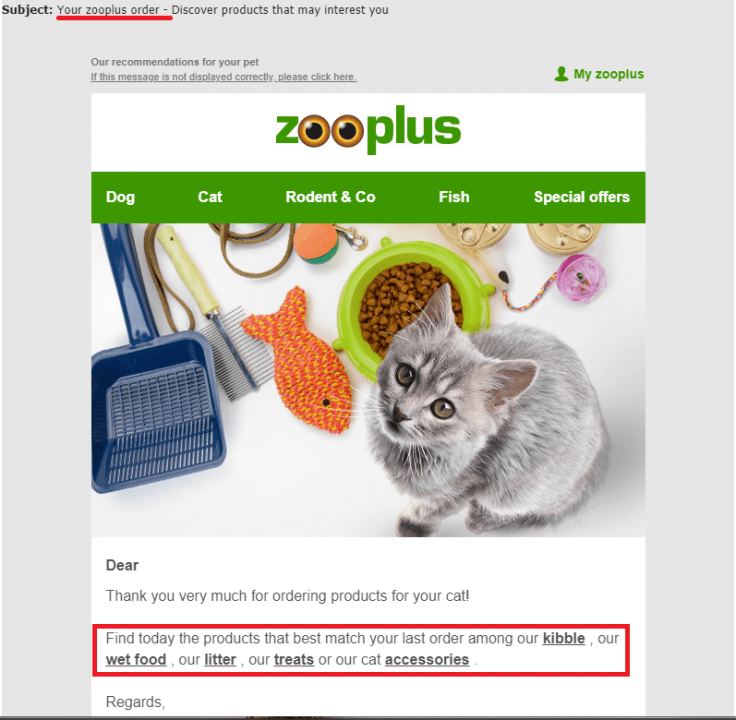
Making subject lines too long:
The point of a subject line is short, sweet, and to the point. If your subject line is too long, it’ll get cut off on mobile. Stick between 16 and 41 characters (about 7 short words) or so for best results.

When in doubt, look at your own inbox. What makes you want to click and open? How can you evoke that same feeling with your own email campaigns?
2. Neglecting Segmentation: The Spray and Pray Email Marketing Mistake
Batch-and-blast, or sending the same exact message to your entire list is an egregious email mistake that many ecommerce marketers are still making.
Customers don’t want emails that aren’t relevant to their wants and needs. 70% of millennials say they’re frustrated with the irrelevant emails they receive. They want personalization—in fact, a whopping 91% of consumers say they’re more likely to shop with brands that provide personalized offers and product recommendations.
The biggest email marketing mistake is believing that personalization is simply using your subscriber’s first name.

Personalization in email marketing goes so much deeper than just “Hello |First_Name|.” The content you send to your customers also needs to be personalized. You can use your subscriber’s first name all you want, but if the actual content of the email isn’t relevant to them, you won’t get anywhere.
So how can you avoid this common email problem? Simple—use segmentation.
Segmentation splits your large email list into smaller groups (or segments) based on something these contacts have in common. It can be done in a few different ways:
- Demographics: Age, gender, location, etc.
- Campaign engagement: Opened/not opened, clicked/not clicked, lack of engagement for so many days, etc.
- Shopping behavior: Recently purchased, recently abandoned a cart, hasn’t purchased in X days, purchases on average a certain amount, etc.
You can use this to better target your email campaigns so you’re not sending irrelevant content to your subscribers. What does that mean for you? Higher open rates, more clicks, more conversions, and thus, of course, higher revenue.
You can take personalization a step further when setting up customer lifecycle workflows, such as product, browse, and cart abandonment, welcome, order confirmation, etc. These workflows respond to your customers’ behavioral triggers, hyper targeting the message based on what your customer needs.
3. Getting the Timing Wrong (or Oversending Emails)
Sending emails at the wrong time or frequency is a common email marketing mistake. We’ve all received an email inexplicably sent at 3 am our time (and thus, dutifully ignored), or perhaps one-email-too-many that lead us towards the unsubscribe button.
I’ve even unsubscribed from an ecommerce brand for daily tone-deaf promotional emails while I was battling their sub-par customer support for a refund. Not a good look.
So how can you avoid the all-too-common email fail?
Start by pausing promotional emails when your customers enter certain workflows. For example, if a customer is entering talks with customer support, positively or negatively, it would be a good idea for that to trigger either a pause of all other workflows and campaigns, or an exit entirely.
It’s also a good idea to avoid your customer getting too many emails altogether by pausing promotional email campaigns for those who have entered a lifecycle workflow, such as cart abandonment for example. You want their attention focused on the products they’ve already fallen in love with.
Also, add subscribers to your promotional campaign list only after they’ve exited a welcome series workflow. This way, you’re not blasting them with emails as soon as they sign up.
Email timing is also important (and more so for SMS and push notifications), so be sure to send your campaigns at moments when your customer is sure to see them.
We’ve analyzed billions of our customers’ data to find when to send email blasts:
- The first half of the month earns the highest orders.
- Thursday earns the most orders per week (followed closely by Tuesday).
- Sending campaigns around the workday (8 am, 1 pm, 4-5 pm) will earn you the highest open and click-through rates.
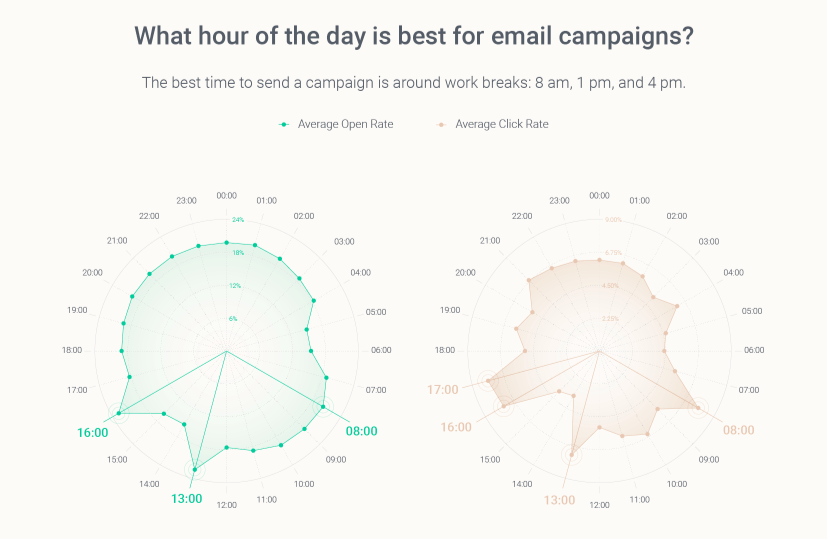
4. Using Too Many Unclear CTAs
Ever seen an email that was full of linked buttons, or worse—lacked a single clear direction or message?
Many ecommerce marketers tend to overdo it when they’re first starting out. In an attempt to avoid over-sending email campaigns, they build one huge email containing everything but the kitchen sink.
But you shouldn’t leave your customers wondering where to go next. Chances are, they’ll simply close your email and move on with their days.
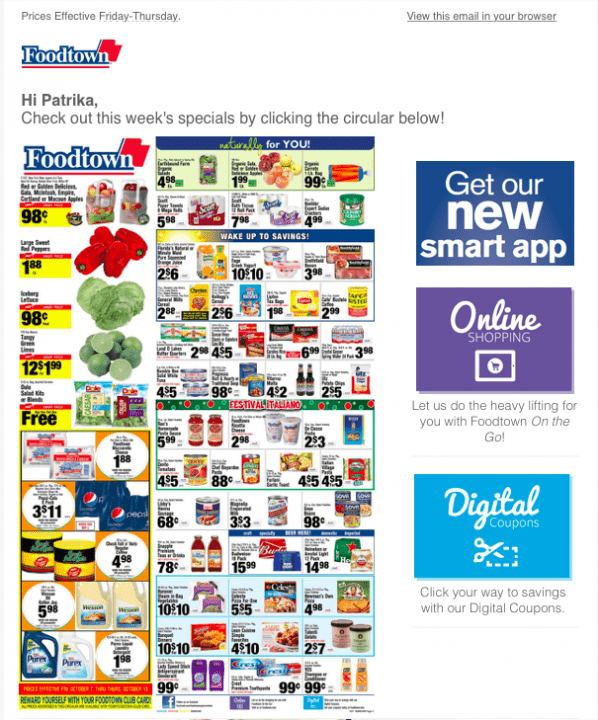
An email serves one purpose, and that’s to tell your customer what they should do next. Whether that call-to-action is to check out a new collection of products, return to a forgotten cart, or leave a review for a recent purchase, everything above-the-fold of your email should lead subscribers in a clear direction.
So how can you avoid this common email problem and make the next step clear?
Pair down your email so you stick with one central theme or goal. Keep the next step as the focus of your email from its conception, and even include that message in your subject line.
Include bold, bright CTAs that stand out from your email and tell your subscriber what that next step is. In fact, a great method for making sure your CTAs stand out is performing a squint test. Look at your emails and squint until the email is a bit blurry. Does the CTA still stand out? It should.
You can still include annex elements below the fold, like calls to follow social media, product recommendations, etc. But they should feel like a secondary goal when reading your email.
5. Alienating Your Mobile Users
There is no worse torture than opening an email on your phone and being unable to read any of it. Small text that’s impossible to read on a mobile device, images that are far too wide, teeny tiny CTAs that fat thumbs couldn’t hope to click, the list of mobile email errors goes on.
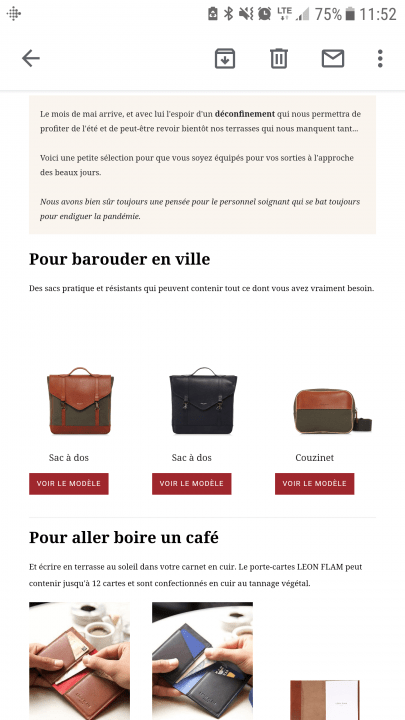
If you’re committing one of these email marketing mistakes for mobile users, you’re in luck. Many ESPs (email service providers) have responsive email design which will automatically optimize your text and various blocks for mobile. That said, there’s still some legwork to be done on your end.
Make sure your images are an appropriate size. Your ESP will scale them down to fit mobile devices, but it’s your job to make sure they’re understandable when scaled down. This means avoiding a lot of text on your images, or at least making sure the scale of that text is still visible even on a phone screen. A good size to shoot for is 600 x 650 px as the most popular screen resolution worldwide is 360×640.
Another thing to consider even with responsive email design is the amount of text you include in emails. Text is necessary, especially for email clients that tend to block images in emails. However, always check what your email looks like on mobile to verify that your text doesn’t create an endlessly scrolling wall-of-text.
6. Sending Unprofessional Marketing Emails
We’re all human, and mistakes happen. But nothing is a bigger “oof” than when you send an email campaign out with a mistake in it. It’s the quickest way to look unprofessional, and to lose your customers’ trust.
Try to avoid these email mistakes:
- Broken or misplaced links: That CTA isn’t going to do you any good if the link is broken or it’s going to the wrong page.
- Typos: For those of us who type faster than we think, typos are a way of life. Enabling a browser spellchecker or simply asking a colleague to give it a second look can save you from a ton of embarrassment.
- Low quality images: Low quality, or poorly sized images can make your email look amateur. Choosing the right images for your email, and creating great images specifically for your campaigns is the way to avoid this.
- By using the right ESP and double-checking your work, you can avoid this common email marketing mistake.
7. Not Tracking Email Metrics
Unlike some of the other email mistakes in this list, this one isn’t quite so apparent to your customer. However, it’s a great way to shoot yourself in the foot.
After all, how can you optimize your email marketing if you’re not at least tracking your own progress and setting a benchmark?
Worse yet—you could be tracking the wrong metrics. Getting swept up in vanity metrics won’t help you get anywhere either. Focus on clear, actionable email metrics that tell you what to do next:
- Open rate: This is the percentage of your subscribers who have opened your email. A low open rate means you should work on your subject lines.
- Click-through rate: CTR is the percentage of subscribers who have clicked on any link within your email campaign. It’s normal for CTR to be considerably lower than open rate, and it tells you if your email content is resonating with your subscribers.
- Conversion rate: Conversion rate tells you how many subscribers purchased after clicking through your email campaign. This can tell you if your product recommendations are relevant to your subscribers.
- Bounce rate: Bounce rate is the percentage of emails that never reached their intended destinations. Bounce rate tells you about the quality of your subscriber list, and you should remove hard bounces immediately to avoid affecting your email deliverability.
- Unsubscribe rate: The unsubscribe rate refers to the percentage of contacts that have unsubscribed after an email campaign. This isn’t necessarily a bad thing—you don’t want to send your campaigns to those who don’t want them. An unsubscribe rate can tell you if you’re sending too many emails, if your tactics are too aggressive, etc.
There are more metrics you can track to be sure you’re avoiding email marketing mistakes, and they could affect your deliverability. Email deliverability depends on several factors: service provider, sender’s domain, email list quality, sending frequency, and more. Maintaining a healthy subscriber list is the best way to maintain that deliverability and avoid the dreaded spam folder.
Typically, your ESP will afford you all of these metrics and more, but a truly great ESP will offer sales metrics and insights too.
Related Articles
How can I create a marketing automation scenario?
You can create the marketing scenario through the following steps: From the Admin panel, go to Campaigns. Click on the Recurring Campaigns. Click to create new Recurring Campaigns, and add the credentials to create the campaigns. Design the Campaigns ...Transactional vs Marketing Push
Push notifications and emails are both powerful ways to deliver messages to your users. While these two mediums have some similarities, the methods and strategies used in email marketing are quite different than what is required to be successful with ...Transactional vs Marketing emails
Transactional and marketing emails serve different communication purposes and use cases. The difference between a marketing email and a transactional email, is why the message is being sent and what is the end goal of the communication. With ...Marketing automation
Marketing automation Marketing Automation: Why do it? Marketing is about people. It's about achieving every individual need and desire while communicating and interacting with the masses. This means that as people change and the world evolves, ...Single-Channel vs. Cross-Channel Customer Engagement
Cross-Channel Cross-channel marketing is about building meaningful experiences and using fine-grain personalization to deliver the right message, at the right time, across the right channel, and to the right individual. It’s also important to stress ...